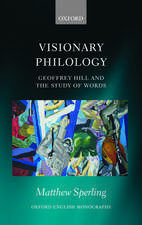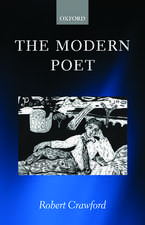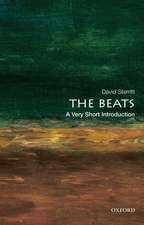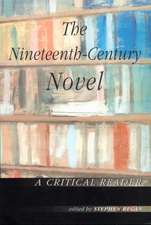Sonnet
Autor Stephen Reganen Limba Engleză Hardback – 28 apr 2019
sonnet with detailed critical analysis to show how the sonnet has achieved its special status and popularity among poets in Britain, Ireland, and America.
| Toate formatele și edițiile | Preț | Express |
|---|---|---|
| Paperback (1) | 197.52 lei 10-16 zile | |
| OUP OXFORD – 28 feb 2019 | 197.52 lei 10-16 zile | |
| Hardback (1) | 702.46 lei 6-8 săpt. | |
| HURST & CO – 28 apr 2019 | 702.46 lei 6-8 săpt. |
Preț: 702.46 lei
Preț vechi: 912.28 lei
-23% Nou
Puncte Express: 1054
Preț estimativ în valută:
134.42€ • 140.63$ • 111.66£
134.42€ • 140.63$ • 111.66£
Carte tipărită la comandă
Livrare economică 02-16 aprilie
Preluare comenzi: 021 569.72.76
Specificații
ISBN-13: 9780192893079
ISBN-10: 0192893076
Pagini: 448
Ilustrații: None
Dimensiuni: 165 x 236 x 30 mm
Greutate: 0.73 kg
Editura: HURST & CO
Locul publicării:Oxford, United Kingdom
ISBN-10: 0192893076
Pagini: 448
Ilustrații: None
Dimensiuni: 165 x 236 x 30 mm
Greutate: 0.73 kg
Editura: HURST & CO
Locul publicării:Oxford, United Kingdom
Notă biografică
>He is the founding editor of The Year s Work in Critical and Cultural Theory (Blackwell) and the editor of The Politics of Pleasure: Aesthetics and Cultural Theory (Open University Press, 1992). He has also edited The Eagleton Reader (Blackwell, 1998). Among his publications on twentieth-century poetry are Philip Larkin (Macmillan, 1992) and the New Casebook on Larkin (1997). His most recent book is The Nineteenth-Century Novel: A Critical Reader (Routledge, 2001).
Descriere
Provides a study of one of the oldest and most popular forms of poetry - the sonnet. This book combines a historical overview of the sonnet with detailed analysis to show how the sonnet has achieved its special status and popularity among poets in Britain, Ireland, and America.
Recenzii
There is no better close reader of the formal effects of sonnet structure, sound, syntax, rhyme, and rhythm. He exfoliates their localised effects with such deft care and artfulness ... Regan manages somehow to hold our attention throughout and focus his interpretive energies so that each sonnet gets its due and reveals its singular qualities. To read The Sonnet is to have the eye trained to see more, even in sonnets of well-worn familiarity. From now on, whenever I teach or write about sonnets, the first question I will ask myself is: what did Regan have to say?












